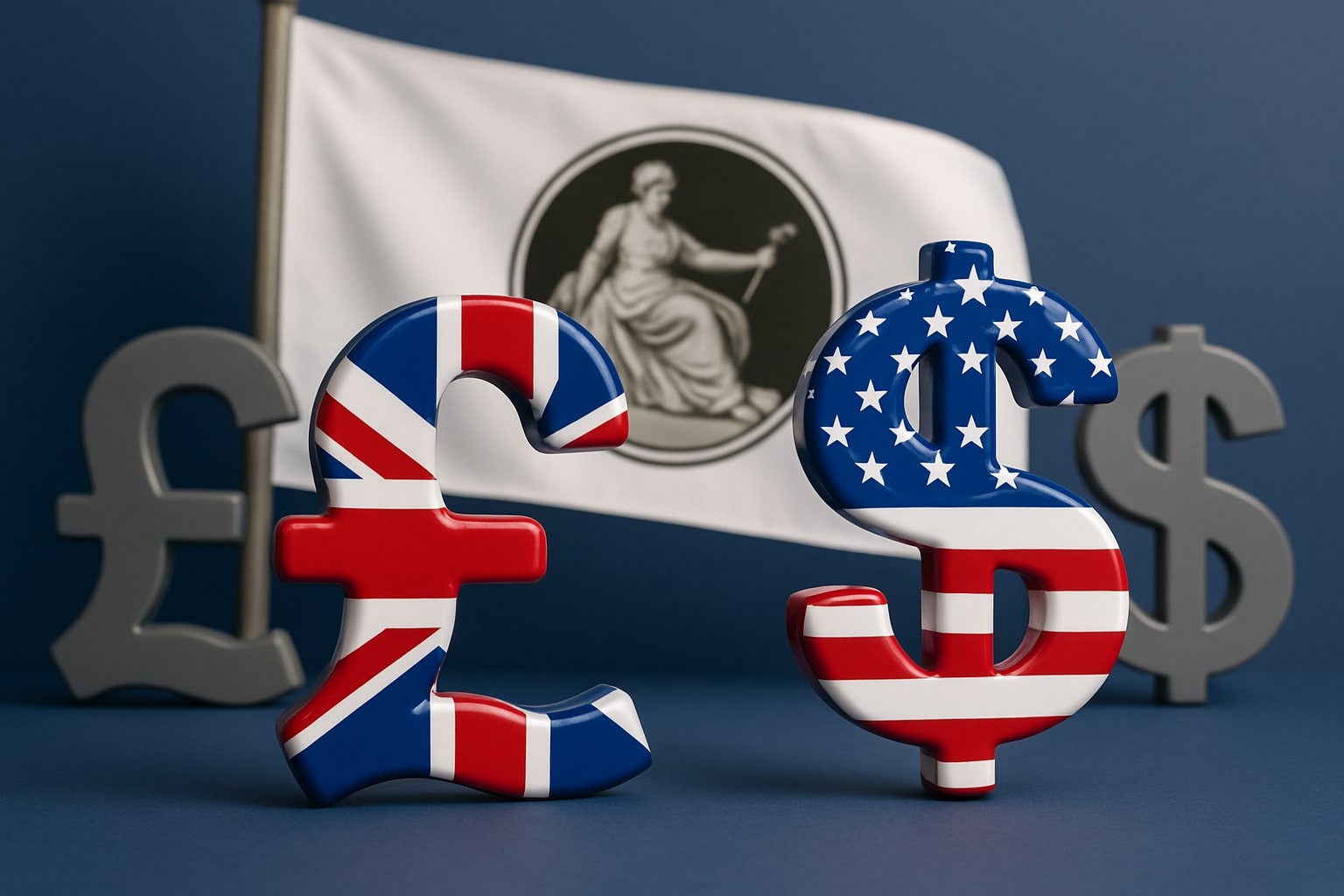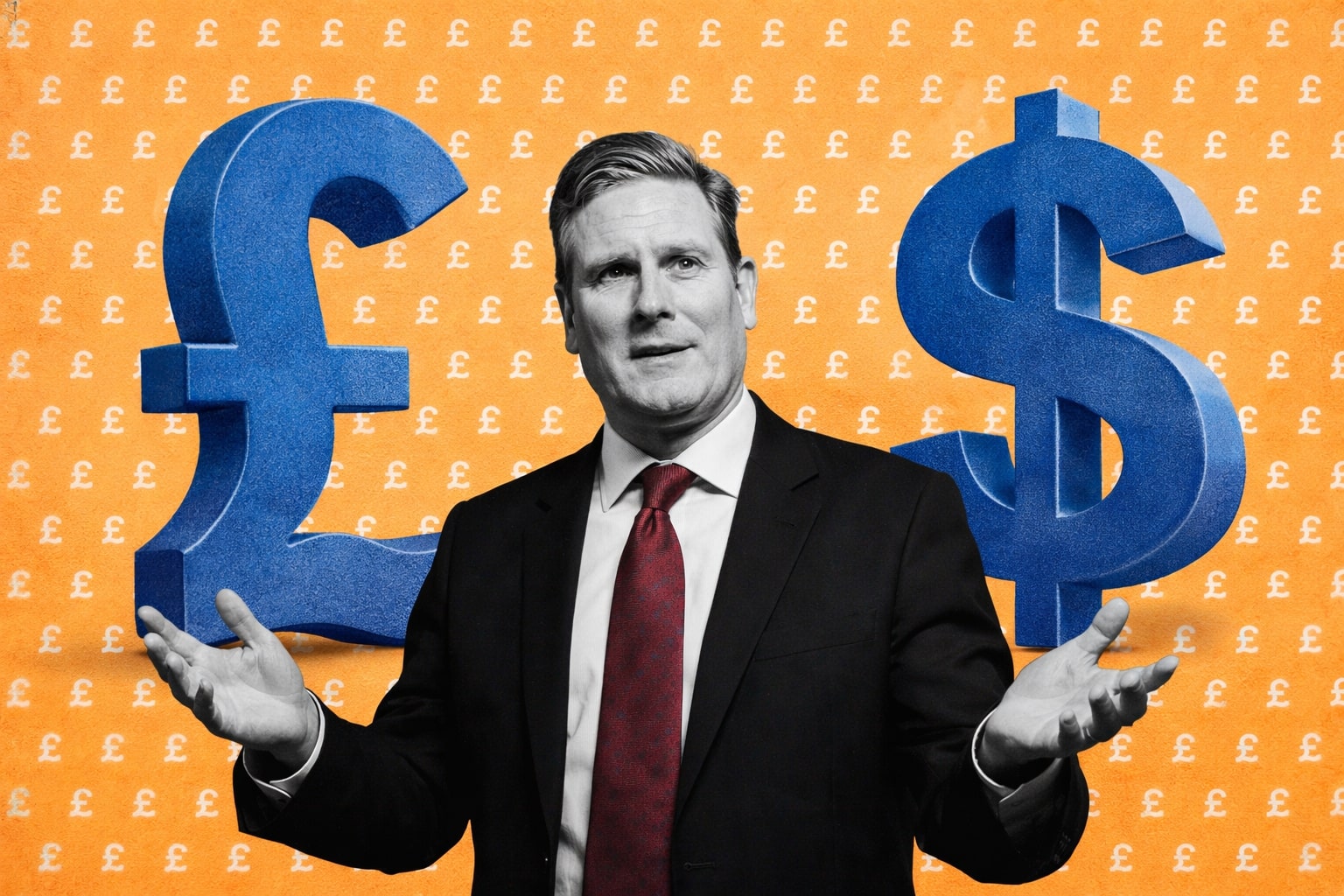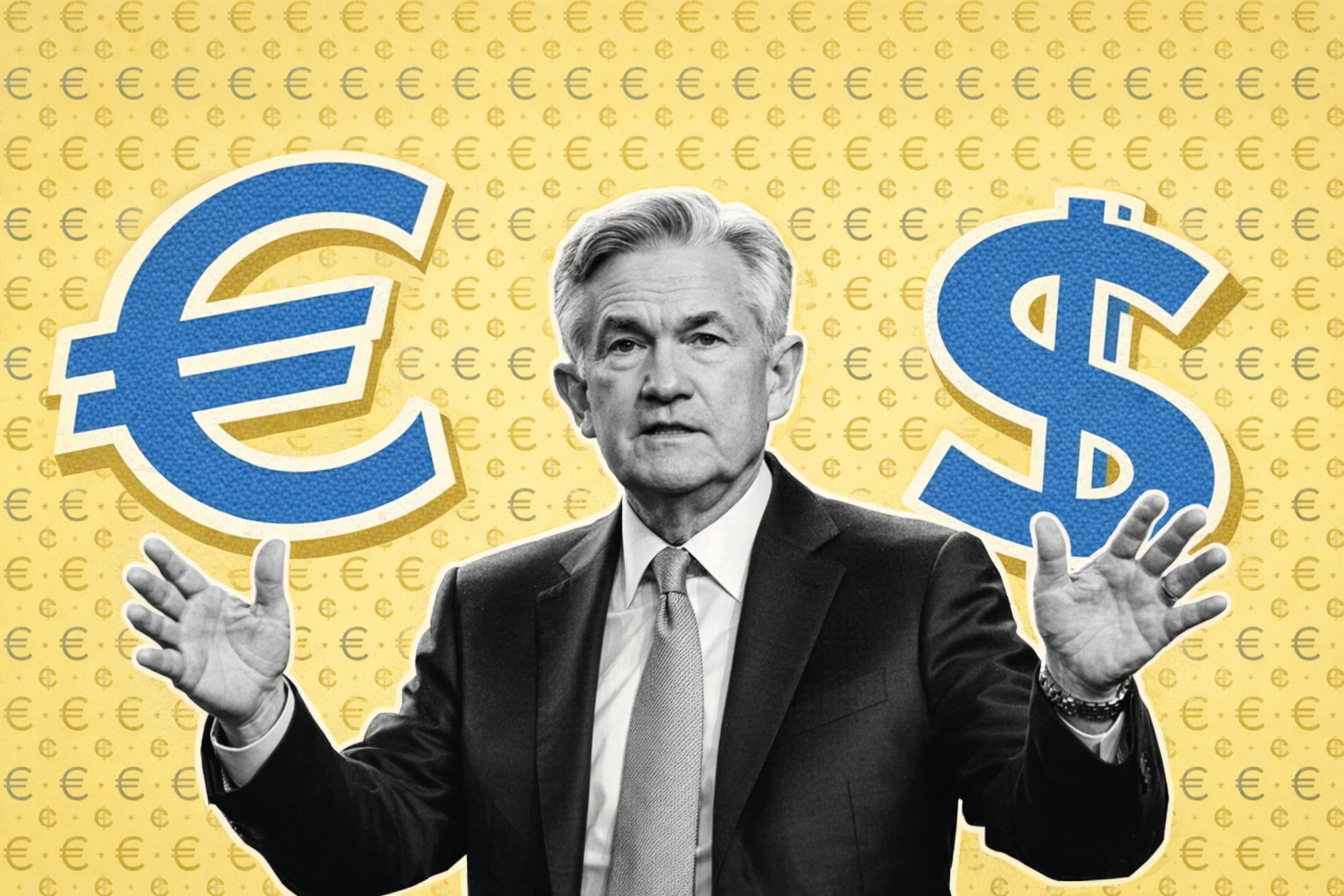
GBP/USD Price Steadies at 1.3550 as Markets Brace for CPI and Fed Signals
Sterling’s August rally faces its next test with UK inflation data, Fed minutes, and Powell’s Jackson Hole address shaping the path for the pair | That's TradingNEWS
GBP/USD Consolidates Around 1.3550 as Traders Balance CPI Risks and Fed Easing Bets
The pound to dollar pair GBP/USD is locked in a tight band around 1.3540–1.3550 as investors await several high-stakes catalysts. UK inflation data for July is expected to show consumer prices holding steady at 3.7% year-on-year, well above the Bank of England’s 2% target. The print follows an August 25-basis-point rate cut that took the base rate to 4.25%, a move judged by markets as a “hawkish cut” given the split 5-4 vote. Traders have since priced the next easing for February 2026, but a hotter CPI reading could test that assumption and keep gilt yields, already hovering near 4.70%, on an upward path that reinforces sterling. On the other side of the Atlantic, the Federal Reserve’s Jackson Hole Symposium between August 21–23 and the release of FOMC minutes mid-week dominate the outlook for the dollar. Fed funds futures currently assign an 85% probability of a September rate cut, but expectations vary between a standard 25-bps move and a larger 50-bps cut. That divergence has kept GBP/USD steady but prone to volatility if Chair Powell hints at a slower path of easing.
Geopolitics Add a Risk Premium to GBP/USD
The currency pair is also caught in the geopolitical crossfire after last week’s inconclusive Trump–Putin talks in Alaska. The focus now shifts to Washington, where President Trump meets Ukraine’s Zelensky alongside NATO leaders. A durable truce could ignite a wave of risk appetite that indirectly boosts the pound. The opposite is also true: a stalemate or escalation may harden the dollar’s safe-haven appeal. Already, the pound’s outperformance against peers in August—up 2.29% versus the dollar, 2.15% against the Canadian dollar, and 1.70% versus the Swiss franc—is being tested by the headlines. Markets are watching whether the pound can sustain those gains in the face of fragile global sentiment.
Technical Landscape Keeps GBP/USD in a Rising Channel
On the charts, GBP/USD is holding within a rising channel formed in late July, with the lower boundary around 1.3485 and key resistance at 1.3594. Intraday support sits near the 50-period SMA at 1.3545, while a deeper pullback would expose 1.3497 and then 1.3418. Momentum gauges show fatigue: the RSI hovers around 46 after losing altitude from bullish territory, and MACD lines are narrowing, warning of a possible bearish cross. If bulls reclaim momentum above 1.3594, the path opens toward 1.3647 and then 1.3696, levels not seen since early summer. A break under 1.3485, however, shifts the bias lower with 1.3442 and 1.3398 as the next downside objectives.
Macro Drivers for Sterling Beyond CPI
The broader UK economy is flashing mixed signals. GDP for June surprised to the upside at 0.4% against expectations of 0.2%, but the second-quarter expansion slowed to 0.3% from 0.7% previously. Much of that growth was government-driven, leaving private demand weaker. That’s why the Bank of England has grown more cautious about its easing trajectory even after eight cuts since 2022. For the pound, this means upside traction requires strong data confirmation—particularly from inflation and labor markets. At the same time, US dynamics remain pivotal: retail sales, jobless claims, and housing indicators will steer the dollar this week. Any cracks in US jobs data, already showing strain, would bolster the case for aggressive Fed easing, tipping GBP/USD higher.
Sentiment, Positioning, and the Road Ahead for GBP/USD
Investor positioning shows sterling has built a reputation as one of the month’s strongest majors, but the ceiling near 1.36 is proving sticky. The six-week high just below that mark highlights stiff resistance, and sentiment could swing quickly on Powell’s tone in Jackson Hole. If he downplays the case for a large September cut, the dollar may find a bid and pressure the pair back toward mid-1.34s. But if he signals urgency, the door opens for a push to 1.37, which would mark a full recovery of July’s slide from 1.3830. Longer-term projections remain cautious: several banks, including HSBC, still see GBP/USD at 1.37 by year-end before easing back to 1.35 next year, arguing political risks from the UK Autumn Budget and higher taxes could weigh on consumer strength and jobs. That tension between short-term bullish technicals and longer-term fiscal risks defines the debate.
That's TradingNEWS
Read More
-
GPIX ETF Climbs to $52.54 as 8% Yield Turns S&P 500 Volatility Into Income
02.01.2026 · TradingNEWS ArchiveStocks
-
XRP ETF Rally: XRPI $11.54, XRPR $16.35 And XRP-USD At $1.99 Aim For A $5–$8 Cycle
02.01.2026 · TradingNEWS ArchiveCrypto
-
Natural Gas Price Forecast: NG=F Tests $3.50–$3.60 Floor Before LNG Wave
02.01.2026 · TradingNEWS ArchiveCommodities
-
USD/JPY Price Forecast - USDJPY=X Holds Near 157 as BoJ Caution and Fed Cut Bets Drive the Move
02.01.2026 · TradingNEWS ArchiveForex



















